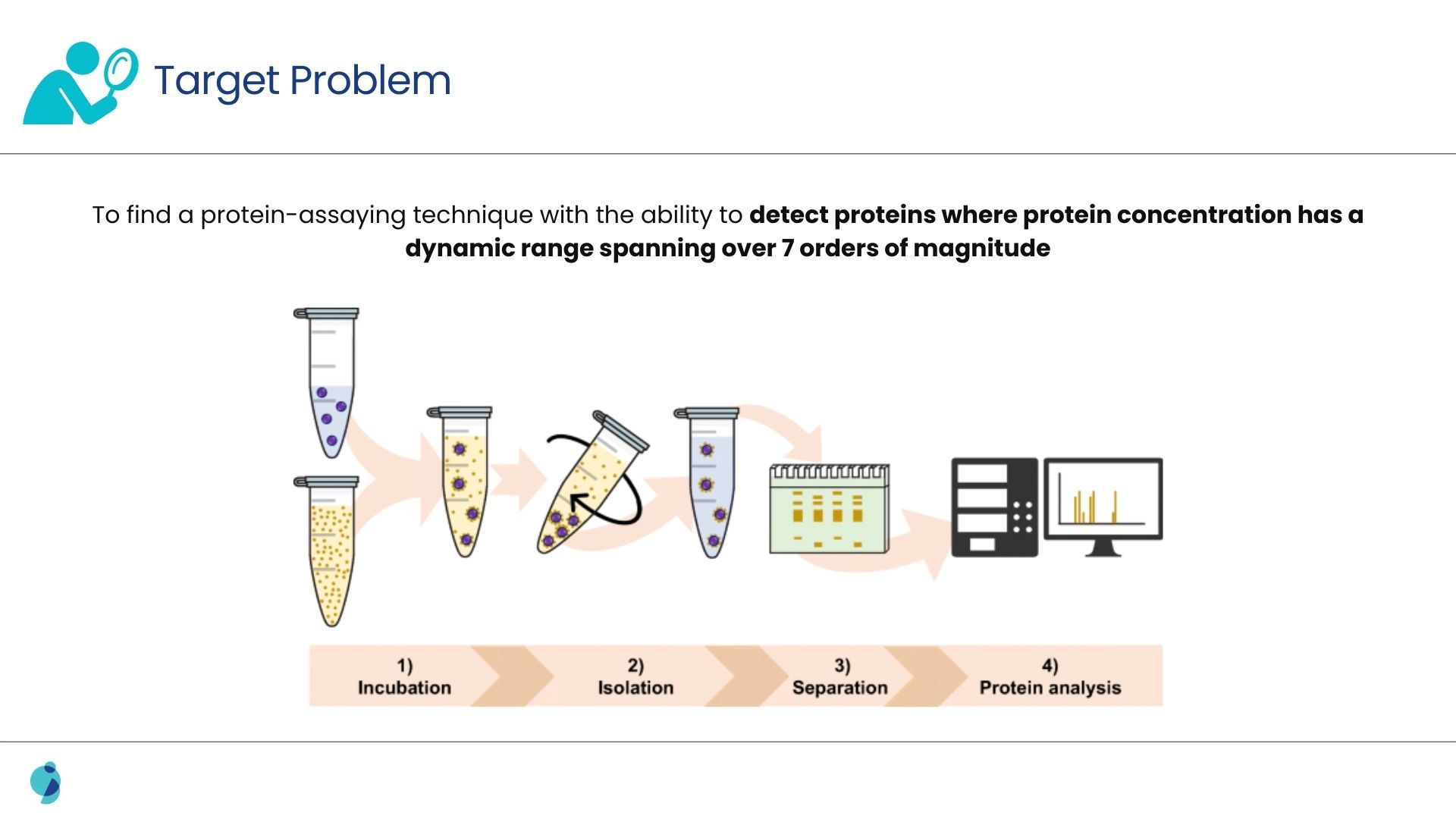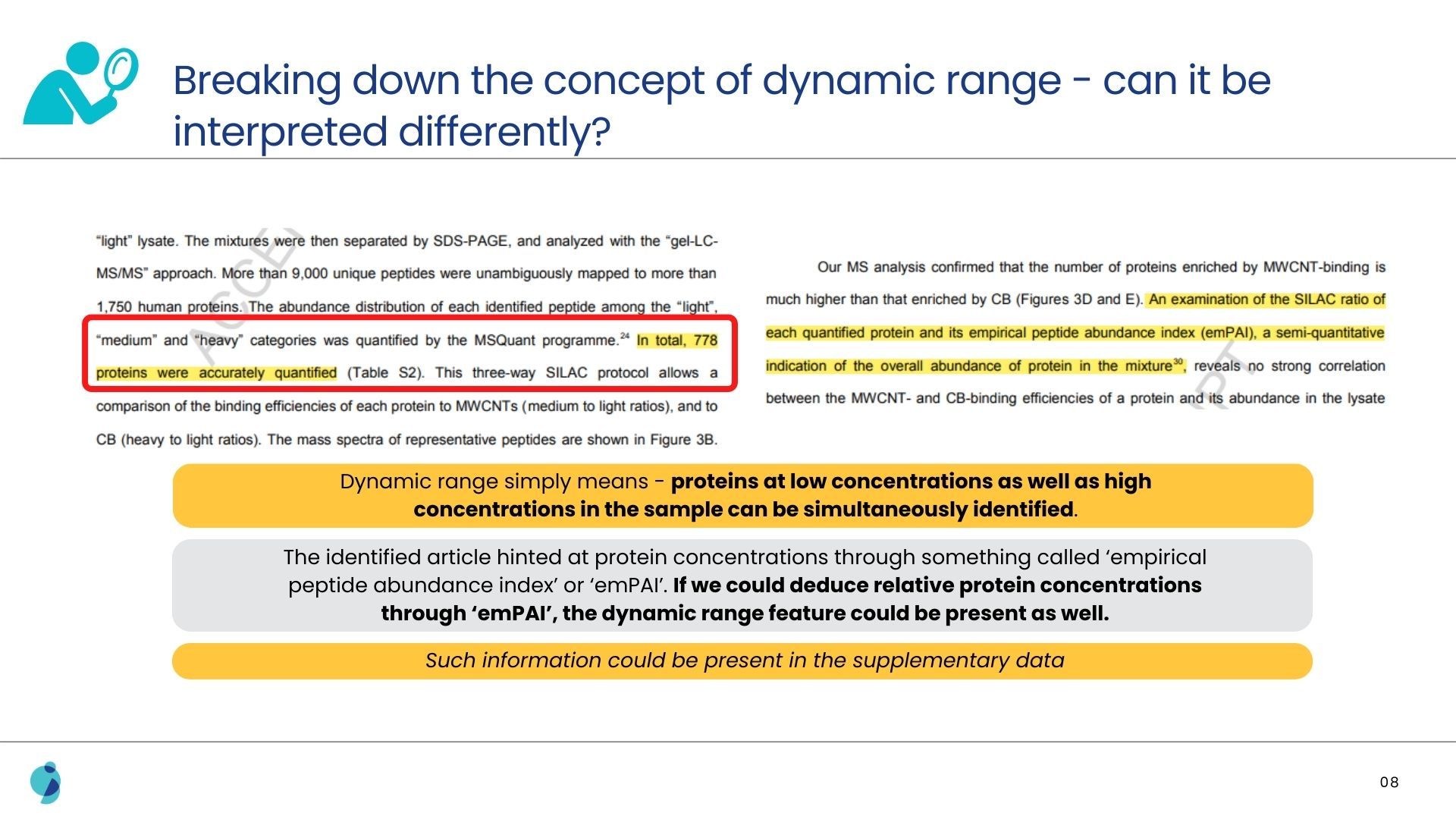
Value Delivered
Utilizing precise calculations derived from identified prior art, we successfully challenged the novelty of a biotechnology patent related to protein assays. This mathematical approach provided compelling evidence in court, ultimately leading to a favorable outcome in the litigation process.
Problems Solved
The primary challenge was to invalidate a competing patent’s claim regarding a “high orders of dynamic range” in a protein detection technique, specifically exceeding 7 orders of magnitude.
After reviewing approximately 1,500 patents, it was clear that existing techniques either demonstrated lower dynamic ranges or focused primarily on sensitivity without addressing the required range. Even an extensive search through non-patent literature on nanoparticle-based protein assays failed to yield direct evidence of the necessary dynamic range.



Solution Offered
A breakthrough came with the discovery of a reference detailing the use of nanoparticles for detecting proteins across various concentrations. Although the reference lacked exact concentration values, a mathematical formula was found that enabled the determination of relative protein content. By delving into supplementary information from related articles, the necessary parameters for these calculations were identified.
This method successfully demonstrated that the required dynamic range was indeed present in the prior art, effectively undermining the novelty claim of the competing patent.
Get the full case study to discover how GreyB successfully invalidated a biotechnology patent through arithmetic on protein assays.






